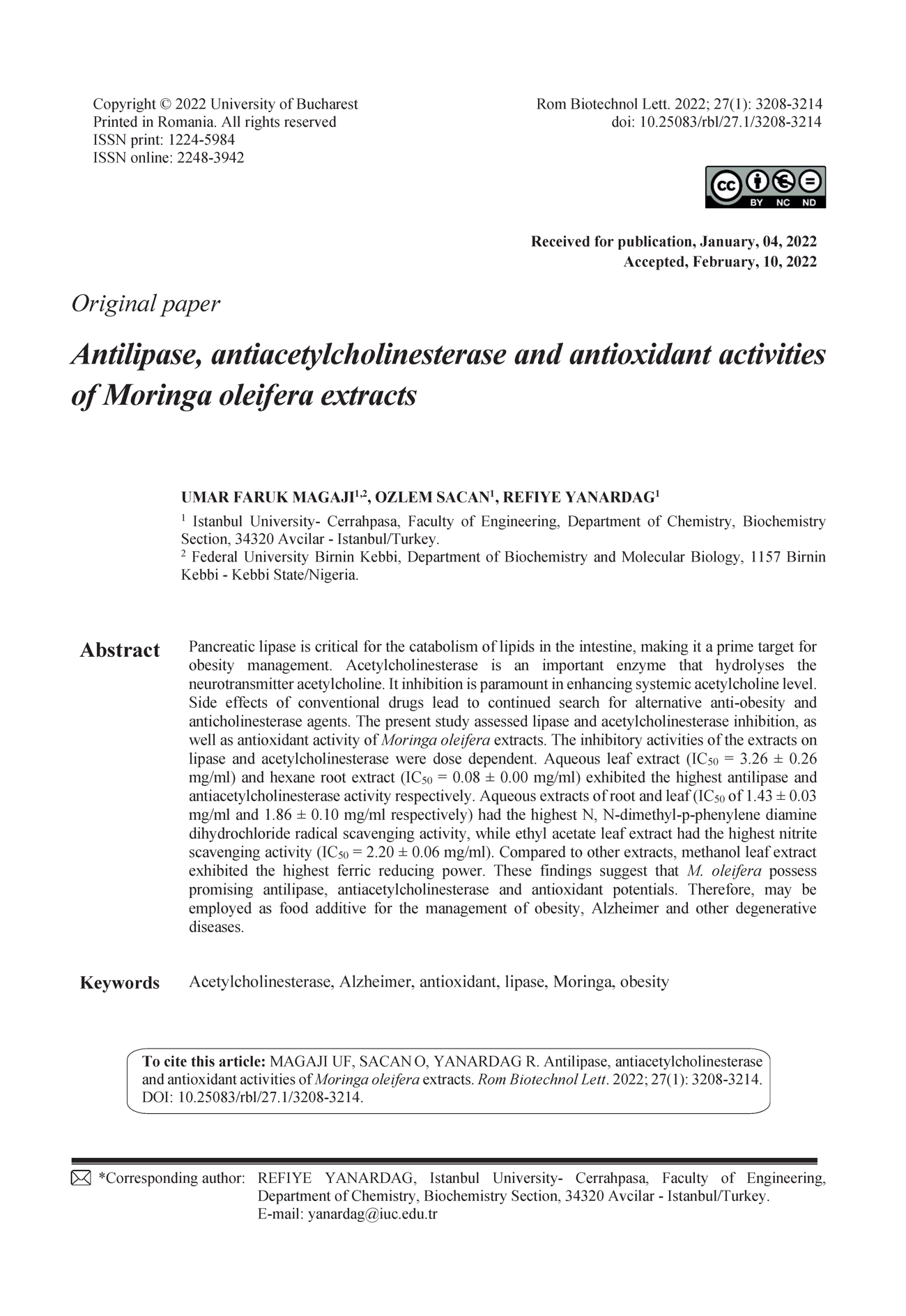Antilipase, antiacetylcholinesterase and antioxidant activities of Moringa oleifera extracts
DOI:
https://doi.org/10.25083/rbl/27.1/3208-3214Keywords:
Acetylcholinesterase, Alzheimer, antioxidant, lipase, Moringa, obesityAbstract
Pancreatic lipase is critical for the catabolism of lipids in the intestine, making it a prime target for obesity management. Acetylcholinesterase is an important enzyme that hydrolyses the neurotransmitter acetylcholine. It inhibition is paramount in enhancing systemic acetylcholine level. Side effects of conventional drugs lead to continued search for alternative anti-obesity and anticholinesterase agents. The present study assessed lipase and acetylcholinesterase inhibition, as
well as antioxidant activity of Moringa oleifera extracts. The inhibitory activities of the extracts on lipase and acetylcholinesterase were dose dependent. Aqueous leaf extract (IC50 = 3.26 ± 0.26 mg/ml) and hexane root extract (IC50 = 0.08 ± 0.00 mg/ml) exhibited the highest antilipase and antiacetylcholinesterase activity respectively. Aqueous extracts of root and leaf (IC50 of 1.43 ± 0.03 mg/ml and 1.86 ± 0.10 mg/ml respectively) had the highest N, N-dimethyl-p-phenylene diamine dihydrochloride radical scavenging activity, while ethyl acetate leaf extract had the highest nitrite scavenging activity (IC50 = 2.20 ± 0.06 mg/ml). Compared to other extracts, methanol leaf extract exhibited the highest ferric reducing power. These findings suggest that M. oleifera possess promising antilipase, antiacetylcholinesterase and antioxidant potentials. Therefore, may be employed as food additive for the management of obesity, Alzheimer and other degenerative
diseases.





